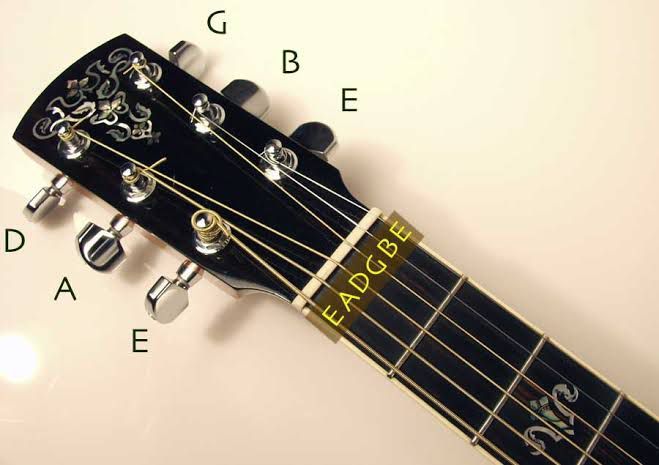
Tuning a guitar is one of the most important skills every guitarist should learn. If your guitar is out of tune, even the best songs will sound off.
If you’re a beginner, don’t worry, tuning your guitar is easier than you think.
Many beginners struggle with tuning because they don’t know where to start. Should you use an app, a tuner, or do it by ear? What if you turn the pegs the wrong way? It can feel confusing, but once you understand the basics, it becomes second nature.
In this guide, we’ll show you simple steps to tune your guitar the right way.
Step 1: Understanding guitar strings and standard tuning
A guitar has six strings, each tuned to a specific note in standard tuning. From the thickest to the thinnest string, the notes are:
E (lowest, thickest string)
A
D
G
B
E (highest, thinnest string)
An easy way to remember this is: Eddie Ate Dynamite, Good Bye Eddie!
Step 2: Using a guitar tuner
If any of these strings are off, your guitar will sound strange. That’s why tuning is important before playing.
The easiest and most accurate way to tune your guitar is by using a digital tuner or a tuning app on your phone.
Here’s how:
Turn on the tuner and place it near your guitar.
Pluck one string at a time and look at the tuner’s screen.
If the note is too low (flat), tighten the tuning peg slightly.
If the note is too high (sharp), loosen the tuning peg slightly.
Repeat this process for all six strings.
Most tuners show a green light or a centered needle when the string is perfectly tuned.
Step 3: Tuning by ear
If you don’t have a tuner, you can tune using the 5th fret method:
Start with the low E string (6th string). You must assume it's already close to the correct pitch.
Press the 5th fret of the E string and match it to the open A string (5th string). Adjust the A string until they sound the same.
Press the 5th fret of the A string and match it to the open D string (4th string).
Press the 5th fret of the D string and match it to the open G string (3rd string).
Press the 4th fret of the G string (not the 5th) and match it to the open B string (2nd string).
Press the 5th fret of the B string and match it to the open high E string (1st string).
This method takes practice but helps train your ear.
Step 4: Keep your guitar in tune
Tune before every practice session—guitars go out of tune easily.
Change old strings—old strings lose their ability to hold tune.
Store your guitar properly—temperature and humidity can affect tuning.
With practice, tuning your guitar becomes easy.
ALSO READ: 7 musical instruments you didn't know were from Africa